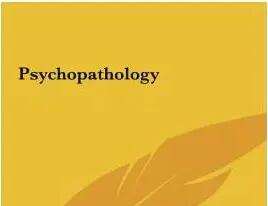Psychopathology
Name
Institution
Psychopathology
Psychopathology代写 Normality is a behavior that is considered socially normal. Shared actions, practices and culture are ···
Normality is a behavior that is considered socially normal. Shared actions, practices and culture are judged as normal behavior. When a person’s behavior is not consistent with the standard behavior, it is considered abnormal. Abnormality is a psychological disorder that is characterized by unusual thoughts, feeling, and behaviors. According to Diagnostics and Standards Manual for mental disorder (DSM 5) (2013) abnormality is a behavior that is not consistent with the social norms. Therefore, the person is not adaptive to society norms, fails to fit the culture and environment and experiences distress in life. The salient criteria used defines abnormality include deviance, dysfunction, distress, and danger.
The four criteria are referred to as the “4 D’s of abnormality.” Psychopathology代写
Deviance means that the person is doing something out of the norm. For instance, if the person has attained the age of maturity and has developed paraphilic behavior, it will be considered abnormal. A paraphilic disorder is an intense sexual behavior, arousing fantasies and urges that are not acceptable (Barlow, Durand, Hofmann, 2016). The person developing paraphilic behavior becomes distressed and engaging in harassment of children, adults, and inanimate objects. Reason being, sexual acts are considered private and treated with respect in society, and therefore, any adult person showing such paraphilic behaviors is considered behaving out of social norms.

The second criterion is dysfunction defined as the behavior or feeling that is interfering with the person’s capability of carrying out the normal daily functions. Dysfunction is failing to relationships with the environment both privately and socially (“World Health Organization,” 2017). For instance, when a person is suffering from major depression disorder, he/she may fail to engage well with the environment thus become isolated in their world. Dysfunction is used as the criterion as most abnormal people fail to connect to their environment. The environment is what define who we are, and the presence of disconnect is construed as an abnormality.
The third criterion is distress which is an unpleasant feeling or emotion that affects the normal functioning. Psychopathology代写
A person experiencing distress looks pale, have perspiration, can at times faint, experience muscle spasms and pain, and exhaustion as well as have a sleeping disorder and more. The person starts viewing the environment negatively while avoiding people and have personal hate. It is mostly associated with people undergoing hard times like sickness, loss from death, divorce, job loss, and others. The reason distress is used to judge abnormality is that the person becomes mentally disturbed and unable to make rational decisions as well as a disconnect with the real environment.
The fourth criterion is a danger that is a manifestation of potential harm to self or people around. The danger becomes the culmination of disorders. It is not normal for a person to harm him/herself or the people he/she loves. One of the signs of danger is when a person began to depend on drugs like nicotine and alcohol dependence. At their extreme levels, the person becomes weak and becomes intolerance on withdrawal. The reason for using this criterion is because it is against any moral society for a person to want to harm him/herself and others under normal circumstances.
In this context, personal experience with my brother suited the above criteria. Psychopathology代写
He turned to be a drunkard which made him lose his job. Most are the time he did not want to speak to anyone and kept to himself. His wife left because she could not tolerate his behavior. As time goes, he becomes worse to the extent of having suicide ideation and had several failed attempts. The behavior made him lose friends and become socially isolated as no one wanted to be associated with a hopeless drunkard who has no future. No one was taking him serious, and he was always looked down and ignored. These negative social receptions aggravated his mental disorder. Luckily the family managed to take him for rehabilitation and psychiatric therapy.
References
American Psychiatric Association. (2013). Diagnostic and statistical manual of mental disorders (DSM-5®). American Psychiatric Pub.
Barlow, D., Durand, V. & Hofmann, S. (2016). Abnormal psychology: An integrative approach. Nelson Education.
World Health Organization. (2017). Depression and other common mental disorders: global health estimates (No. WHO/MSD/MER/2017.2). World Health Organization.



